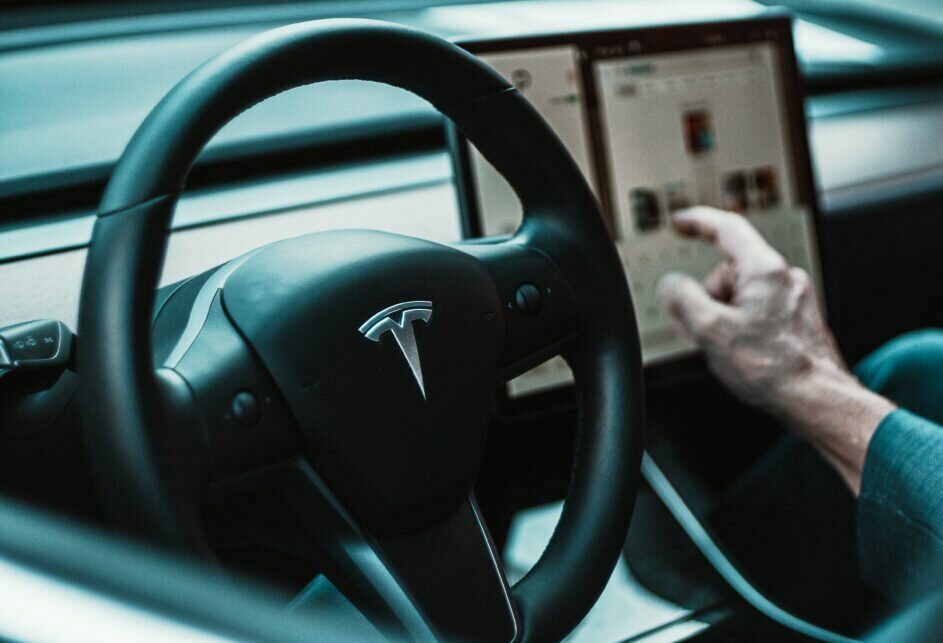Brief • 3 min Read

A recent study by The Harris Poll on behalf of Morning Brew finds that more than half of American consumers are eager to get behind the wheel of a self-driving vehicle. However, despite how intriguing many consumers find this futuristic technology, a strong sense of safety will determine how quickly more consumers adopt this technology.
Consumers’ sense of safety in self-driving vehicles (i.e., vehicles that can sense their environment and operate without any human involvement) varies based on where they are sitting in the vehicle. Just under half (48%) say they would feel at least somewhat safe riding in a passenger seat in a self-driving vehicle, but nearly three in five (59%) would feel at least somewhat safe if they were riding in the driver’s seat. About one in five say they would feel very safe riding in the passenger’s seat (16%) or the driver’s seat (23%).
However, those who would feel less than very safe riding or “driving” in a self-driving vehicle say they would feel safer if the person in the driver’s seat could take over control of the vehicle in the event something went wrong (79%). Additionally, 75% of all consumers say they would like to have a clearer understanding of who would be legally responsible in the event of an accident with a self-driving vehicle.
Naturally, those who feel safe in self-driving vehicles are more likely to use them. Nearly the same percentage of consumers that say they would feel at least somewhat safe riding as a passenger (48%) also say they would be at least somewhat likely to ride in a self-driving vehicle as a passenger (49%). The same trend occurs with the sense of safety (59% would feel at least somewhat safe) and likelihood of riding in the driver’s seat (59% at least somewhat likely).
An interest in self-driving technology is the primary reason that consumers are interested in riding in self-driving vehicles followed by the convenience of not having to drive.
Unsurprisingly, a lack of trust is the primary factor for those who would be unlikely to ride in the passenger or driver’s seat of a self-driving vehicle (46% if riding in the passenger seat passenger, 41% if riding as the “driver”). Additionally, about a quarter of this group say they enjoy driving themselves instead.
Most Americans (62%) believe that there are currently self-driving vehicles available for consumers to purchase anywhere in the world. Even so, fewer Americans claim to have experience with fully or semi-autonomous vehicles, which may play a role in the number of people who still don’t trust them (and the number of people who incorrectly believe a self-driving vehicle available for purchase exists*). About a fifth have driven or ridden in a vehicle with Level 2 advanced driver assist features engaged (21%) or ridden in a vehicle that is capable of autonomous driving under certain circumstances (18%).
Those that are willing to ride in a self-driving vehicle aren’t willing to pay an additional premium on their current situation to do so, but if they had to, they would most likely purchase a self-driving vehicle from Tesla, a premium brand.
More than half of those who say they are at least somewhat likely to ride in the driver’s seat of a self-driving vehicle (i.e., those who would own the vehicle) say they would either pay less than $1,000/year in extra fees (24%) or wouldn’t pay any additional money (28%) in order to use a car with self-driving capabilities. This trend holds for those who use taxi or ride-hail services considering the extra increase in cost per ride to use a vehicle that can drive itself (23% less than $1,000/year, 30% wouldn’t pay any more money).
Two in five consumers say they would prefer to buy a self-driving vehicle from Tesla, more than twice the share of those who would prefer a legacy car maker like GM or Honda. In fact, more than half (52%) of those who are at least somewhat likely to ride as drivers in a self-driving vehicle would prefer to buy that vehicle from Tesla.
Parents and young adults may be the most receptive markets to this technology.
Self-driving vehicles may be a much-needed solution for parents of children under 18. Seventy percent of parents say they would feel at least somewhat safe riding in the driver’s seat of a self-driving vehicle (compared to 59% of all consumers), and 59% of parents say they would feel at least somewhat safe riding in the passenger seat (compared to 48% of all consumers). Two-thirds (64%) of parents say they are somewhat likely to ride as a passenger while 71% say they are somewhat likely to ride in the driver’s seat.
Similar to all consumers, an interest in the technology (40%) and the added convenience (29%) are the primary reasons parents would be like to “drive” a self-driving vehicle.
Gen Z and Millennials also show a strong interest in self-driving cars. Both groups are nearly twice as likely as Baby Boomers to ride in a self-driving vehicle as a passenger (71% of Gen Z, 62% of Millennials vs. 32% of Boomers) or “driver” (74% of Gen Z, 71% of Millennials vs. 46% of Boomers). For those willing to purchase such vehicles they are also much more likely to prefer making such a purchase from Tesla (72% of Gen Z, 52% of Millennials vs. 21% of Boomers) while Boomers would prefer a legacy automotive manufacturer like GM or Ford (25% of Boomers vs. 8% of Gen Z, 14% of Millennials).
Young adults would spend their time in self-driving vehicles differently though. Nearly half (46%) of Gen Z would use the new free time to eat or drink. On the other hand, Millennials would prefer to look out the window and observe their surroundings (29%) or read or watch something (26%).
Methodology
This survey was conducted online within the United States by The Harris Poll on behalf of Morning Brew during March 12-15, 2021, among 1,052 U.S. adults ages 18 and older. This online survey is not based on a probability sample and therefore no estimate of theoretical sampling error can be calculated. Figures for age, sex, race/ethnicity, education, region and household income were weighted where necessary to bring them into line with their actual proportions in the population. Propensity score weighting was used to adjust for respondents’ propensity to be online. For more information on methodology, please contact Dami Rosanwo.
*As of the date range this survey was polled
Subscribe for more Insights
Subscribe to our newsletter for the latest trends in business, politics, culture, and more.
Download the Data
Get the full data tabs for this survey conducted online within the United States by The Harris Poll on behalf of Morning Brew between March 12-15, 2021, among 1,052 U.S. adults ages 18 and older.
Download
Subscribe for more Insights
Subscribe to our newsletter for the latest trends in business, politics, culture, and more.
Download the Data
Get the full data tabs for this survey conducted online within the United States by The Harris Poll on behalf of Morning Brew between March 12-15, 2021, among 1,052 U.S. adults ages 18 and older.
DownloadRelated Content








